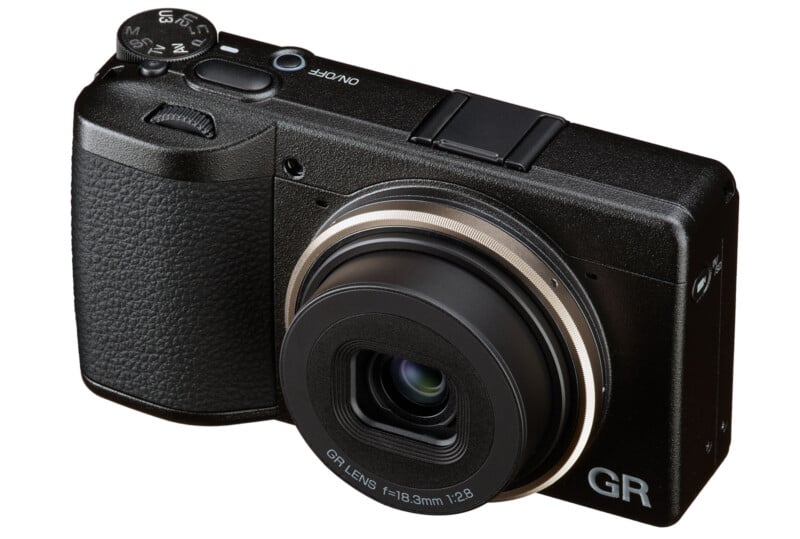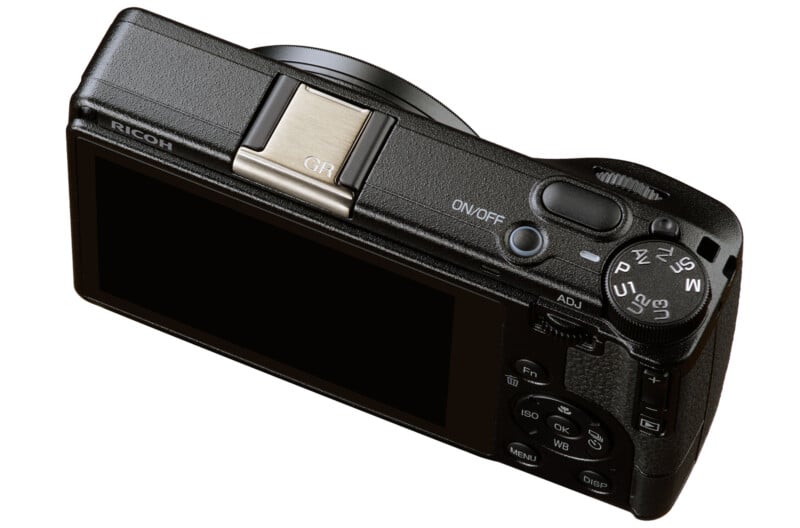Nearly Every Aspect of the Ricoh GR IV Compact Camera Is New
![]()
The highly anticipated Ricoh GR IV premium compact camera has been fully unveiled, and Ricoh has detailed the camera’s new features and specifications. There is much more new with the GR IV than meets the eye.
The Ricoh GR IV Looks Familiar But Has Been Entirely Redesigned
Although the Ricoh GR IV looks a lot like its predecessor at first glance and retains the GR III’s compact, lightweight form factor, the GR IV has been entirely redesigned to be even smaller and thinner. The slimmer body promises a more pleasing shooting experience, and the rear thumb grip has been contoured to fit better in the photographer’s hand.
![]()
The rear control layout has also been redesigned, and the camera’s mode adjustment lever has been swapped to a dial type to ensure “ease of operation.” Ricoh promises that the GR IV is “more functional and accessible than ever before.” The body is made from a lightweight, durable magnesium alloy.
![]()
![]()
The GR IV Has a New 25.7MP Image Sensor and Improved Wide-Angle Lens
The GR IV’s imaging pipeline has also been revamped. The camera features a newly developed APS-C 25.7-megapixel image sensor, an upgraded GR ENGINE 7 imaging engine, and a newly designed 18.3mm f/2.8 GR lens, which, like the GR III’s lens, is equivalent to 28mm in full-frame camera terms. The sensor’s IR-cut filter has a new antistatic coating, which Ricoh says improves its dust removal performance. While a fixed-lens camera is not anywhere near as susceptible to dust an interchangeable lens model, dust finds a way, and the GR IV is better prepared to deal with it than its predecessor.
![]()
The lens features seven elements in five groups, including glass-molded aspherical and low-dispersion glass elements to deliver improved sharpness and minimized aberrations.
Ricoh says that the new image sensor, up from 24.2 megapixels, delivers improved image quality. The GR IV also features the Ricoh-original accelerator unit, which optimizes the signal-to-noise ratio to produce better images at high ISO settings. The GR IV’s native ISO ranges from 100 to a whopping 204,800. The camera records 14-bit RAW (DNG) and JPEG images to 53GB of internal storage, although the camera also has a microSD card slot for overflow.
![]()
While not a big jump in megapixels, the extra pixels help the GR IV’s in-camera crop modes. Photographers can shoot at a 35mm equivalent focal length at 15 megapixels and with a 50mm field of view at 7MP.
Although not designed for video applications, the GR IV can record video. However, video resolution tops out at just 1,920 by 1,080 resolution, and the frame rate is capped at 60p.
![]()
Better Shake Reduction and a Smoother User Experience
To ensure sharp images across a wide range of situations, the GR IV features an updated SR (Shake Reduction) mechanism. Alongside an improved compensation algorithm, the GR IV’s five-axis IBIS unit can compensate up to six steps of shake. The GR III had a three-axis IBIS system rated for four stops of correction.
Other performance improvements include a shorter start-up time — thanks to the redesigned lens barrel and optimized start-up sequence — of just 0.6 seconds, the shortest of any GR camera to date. The camera is also faster to swap to its Macro shooting mode, faster to shut down and close its lens, and faster to autofocus. Ricoh describes the GR IV’s image-plane phase-matching AF system as significantly quicker, more precise, and better in low light.
![]()
The GR IV features a new Program Auto Ex function. This allows photographers to instantly change the camera’s exposure mode using either the front or rear e-dials. By moving the front dial, users can quickly swap to Aperture-Priority AE, while manipulating the rear dial puts the camera into a Shutter-Priority AE exposure mode. A new Snap Distance-Priority AE (Sn) mode lets photographers capture images with a more emphasized depth-of-field effect without fussing with any manual settings.
Building upon the GR III’s 12 conventional effects modes, the GR IV has a new Cinema mode as part of its Image Control function. Using the new Cinema mode, which offers choices of yellow or green tones, photographers can digitally emulate the look of old movies shot on film. Users can adjust the saturation, hue, key, contrast, grain effect, and now, strength and size, to their desired level to fine-tune their preferred image look. Photographers can also process their DNG RAW files from inside the GR IV itself and export a new JPEG version.
![]()
It will be easier than ever to share these customized photos, too, thanks to Ricoh’s new GR World smartphone and tablet app built exclusively for Ricoh GR series cameras. The GR IV communicates with the new app via Bluetooth or Wireless LAN, enabling photographers to instantly send photos from the GR IV to their smartphone, remotely control the camera, and add geotagging to their GR IV image files.
Pricing and Availability
The Ricoh GR IV will be available in mid-September for $1,499.95 in the United States and $1,899.99 in Canada.
Alongside the camera itself, there are some new accessories. The most interesting of the new accessories is the new Ricoh GF-2 Super-Compact Flash, which has been unveiled alongside the GR IV today.

The Ricoh GA-3 Lens Adapter lets users attach the existing GW-4 Wide Conversion Lens to the GR IV. The Ricoh GN-3 (DG) Ring Cap adds an eye-catching metallic finish to the camera, replacing its standard ring cap. There is also a metallic, dark gray hotshot cover (GK-2) available to further enhance the camera’s appearance.



The GR IV uses a new DB-120 rechargeable battery, and there is a new BJ-120 dual battery charger available for the new battery.
Finally, there’s the GS-4 finger strap that aims to improve the handheld carrying experience.
Image credits Ricoh Imaging